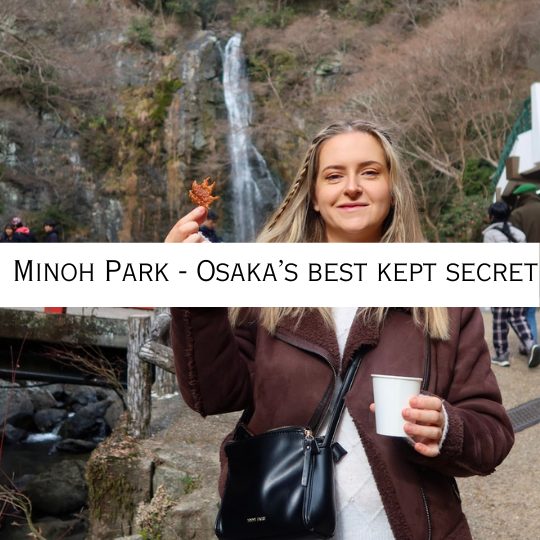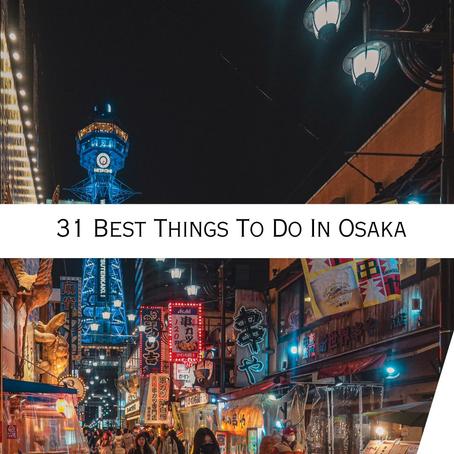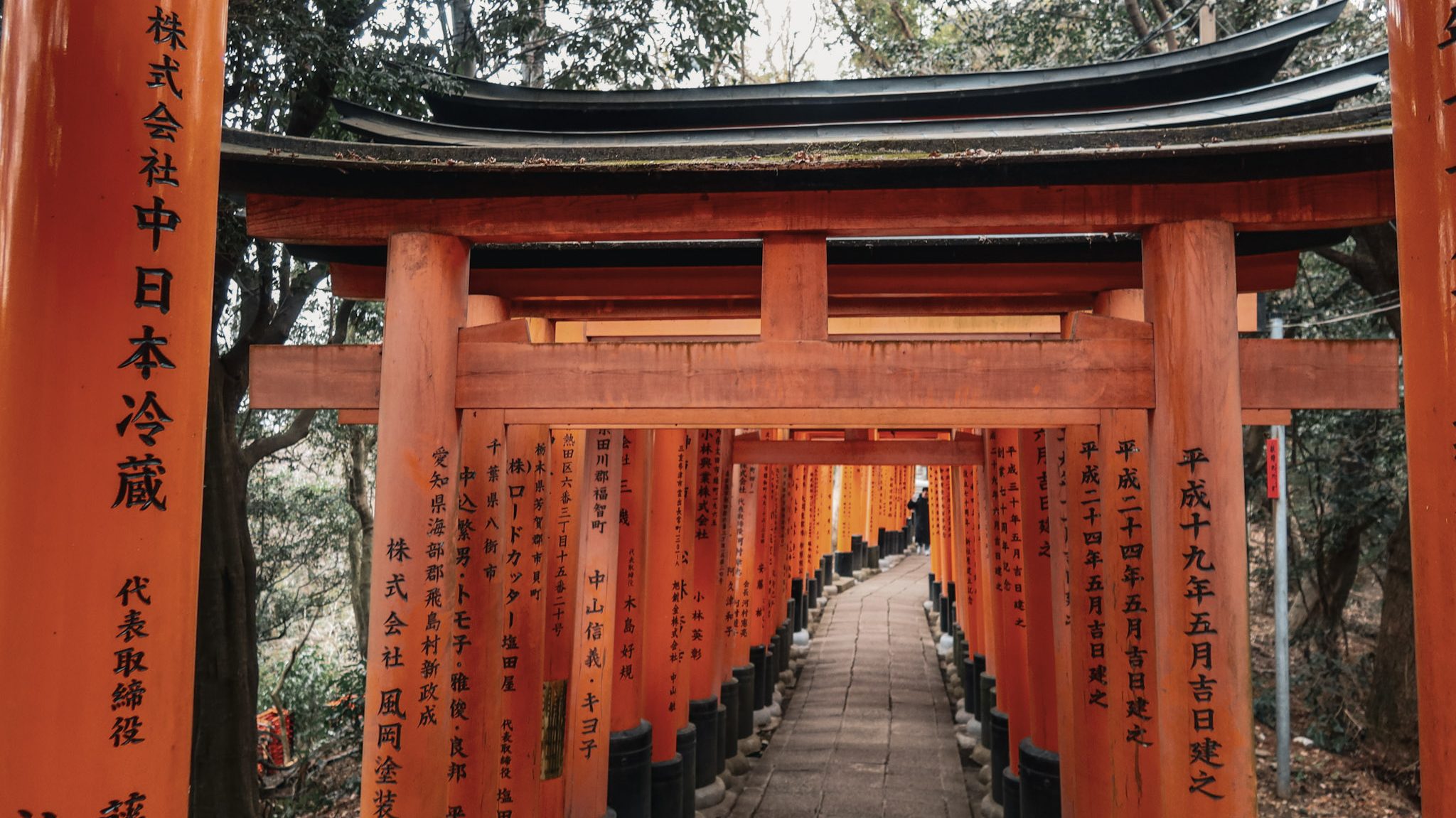
One of the most beautiful hikes I have completed is Fushimi Inari-Taisha (??????). Situated on Mount Inari it is a must-do activity during your trip to Japan!
Visiting Fushimi Inari a surreal experience, I saw the tunnel of orange tori gates online, hundreds if not thousands of times, it was a true “am I really here?” moment!
This famous Kyoto shrine dates back to 711 AD. It’s one of 40,000 shrines dedicated to Inari, the god of sake, rice and prosperity.
This guide for Fushimi Inari is based on my experience and will help you plan your trip! But first, here are some interesting facts to know before you go!
Fushimi Inari Taisha Facts
- Fushimi Inari-Taisha is the most visited shrine in Japan, with a staggering 10 million visitors annually!
- Inariyama hill in south west Kyoto was the original location of Fushimi Inari-Taisha, until it was moved in 816 to its permanent home on Mt. Inari.
- Each one of the 10,000 Tori Gates have been donated by a Japanese person or business. This donation is thought to bring the donator good luck and fortune. The black inscriptions on the gates are the names of the donators.
All About Fushimi Inari-Taisha Hike
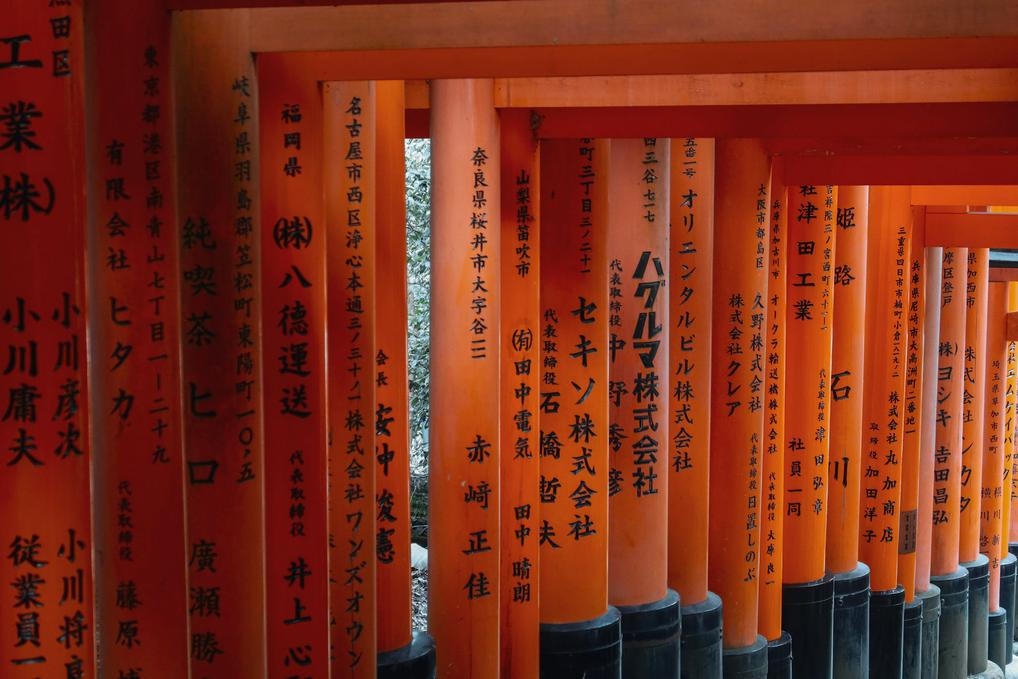
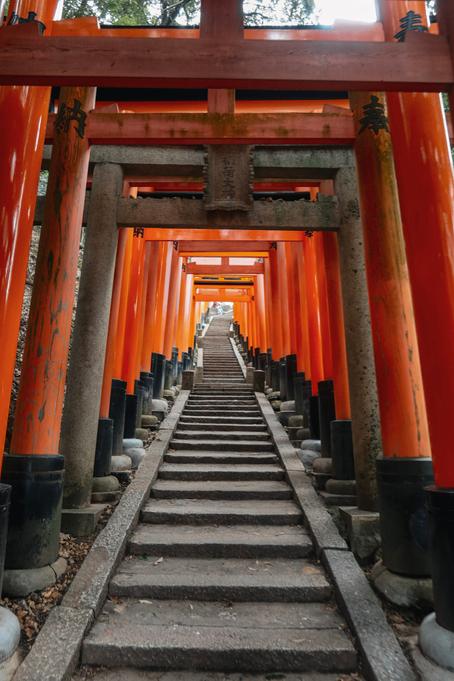
Is this another tourist trap?
Let me start by assuring you that this is not a tourist trap, and is in no way overrated. It honestly was one of the best hikes I have done.
It’s free to climb, and despite the large crowds, most people don’t complete the full hike. I observed the majority of people taking photos at the start and not venturing much further. The initial crowds can be daunting, but persevere – it does get less crowded. Interestingly, even with many people, the path is almost silent.
What is the difficulty level?
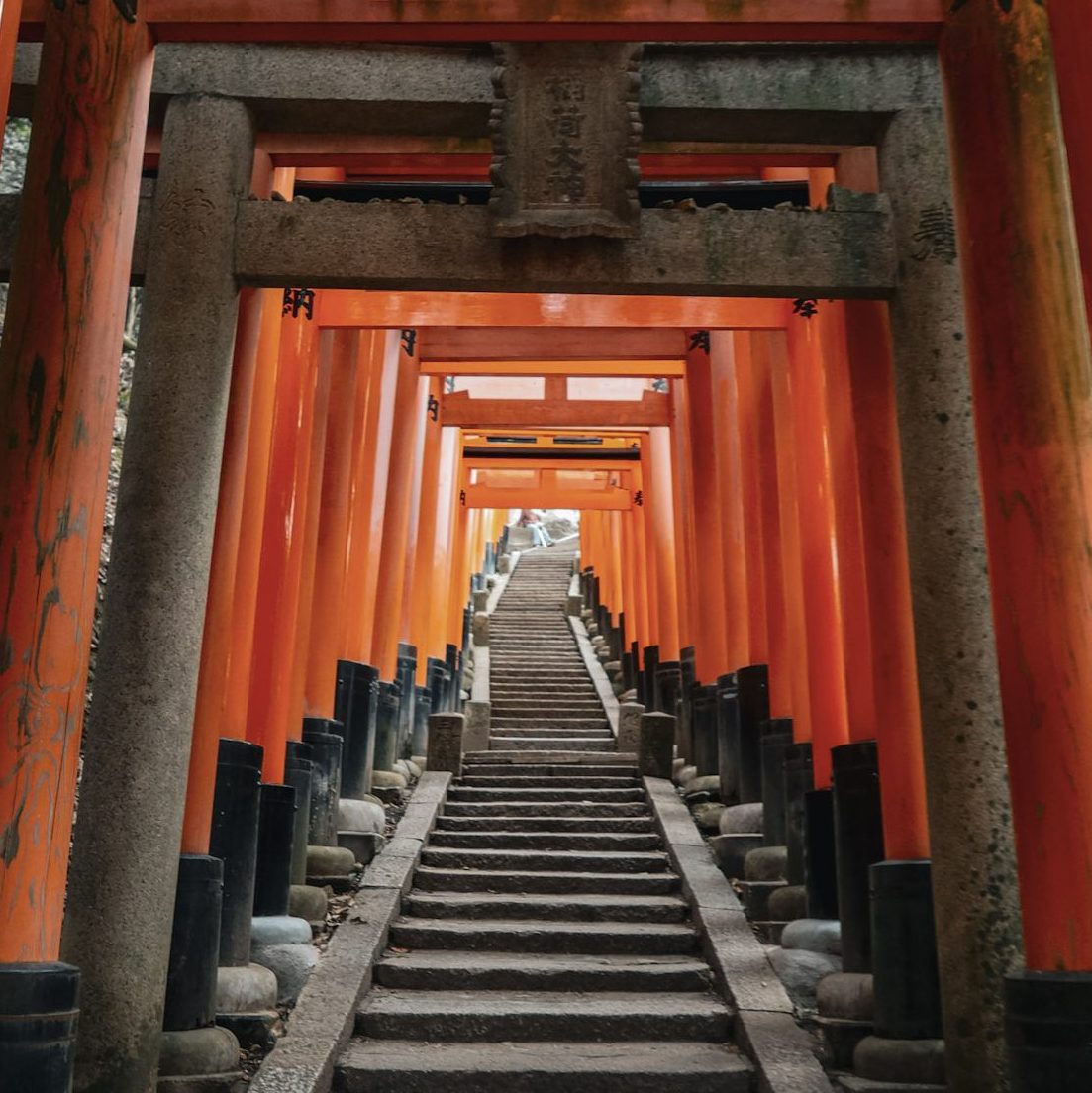
The hike has 12,000 steps to the top. The incline is relatively low, with a total height of 233 meters (764 feet). The entire loop hike up Fushimi Inari-Taisha takes about 90 minutes and covers roughly 4 kilometers.
This hike is manageable for people of all fitness levels, you do not need to be a seasoned hiker whatsoever. There are plenty of vending machines along the way to stock up on water and refresh.
I would advise comfortable shoes – even if I did see a girl climb in thigh boots with a heel (!!), I was impressed!
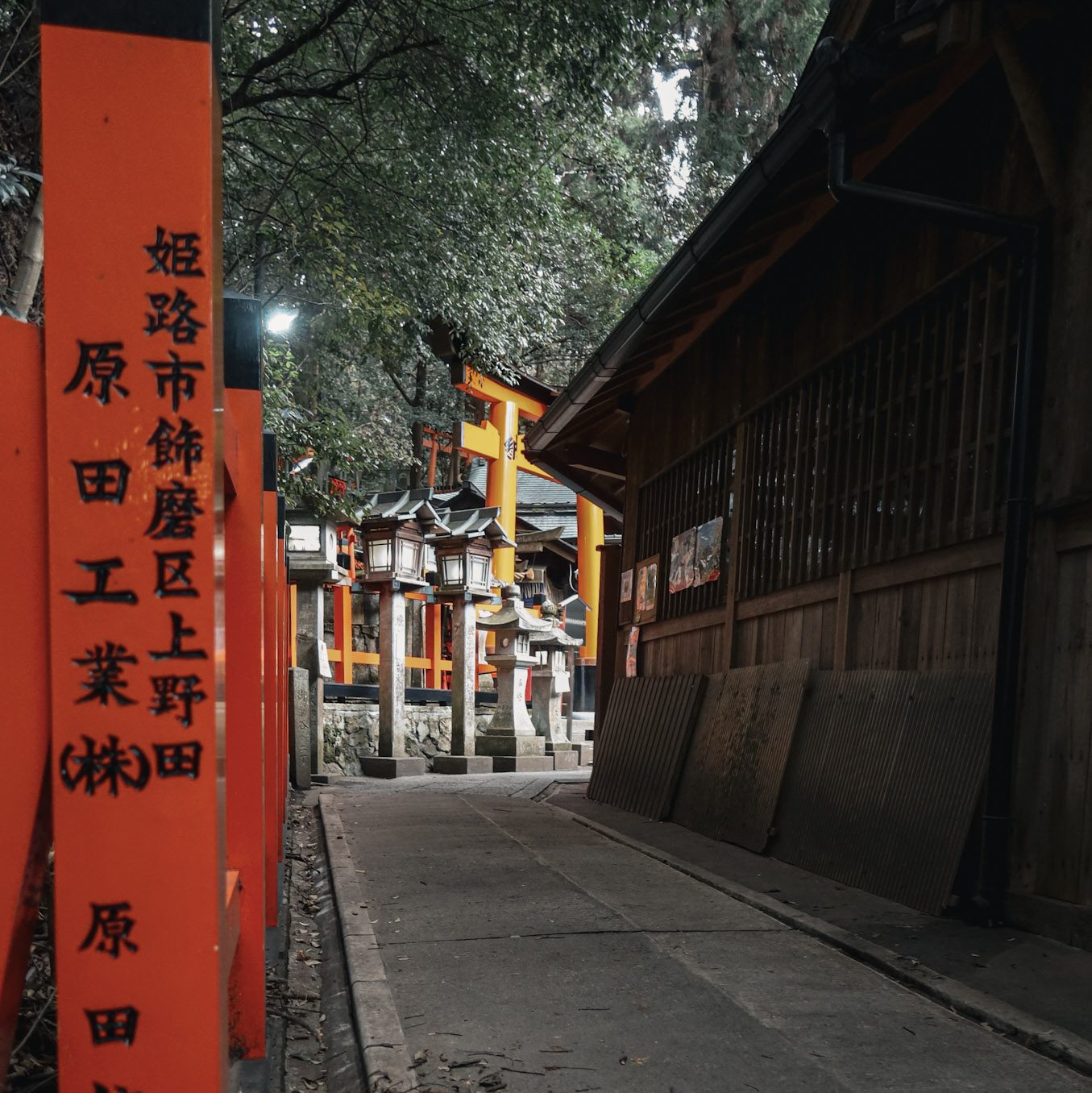
Best time to visit Fushimi Inari
The truth is, the earlier you arrive to Fushimi Inari, the better.
Even at 7:30 am, we encountered a crowd. Though not packed, there were people posing for photos at the entrance, slowing things down. We witnessed tour buses arriving around this time as well. It goes without saying that getting there before the tours helps you avoid large crowds.
Fushimi Inari – what to expect
1. Tori Gates
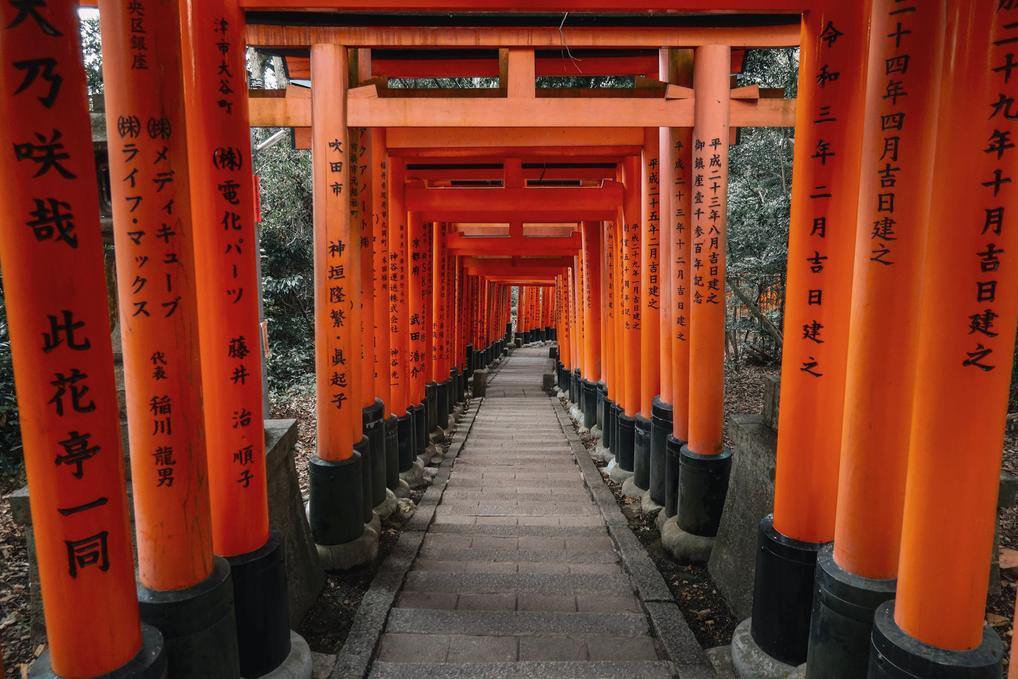
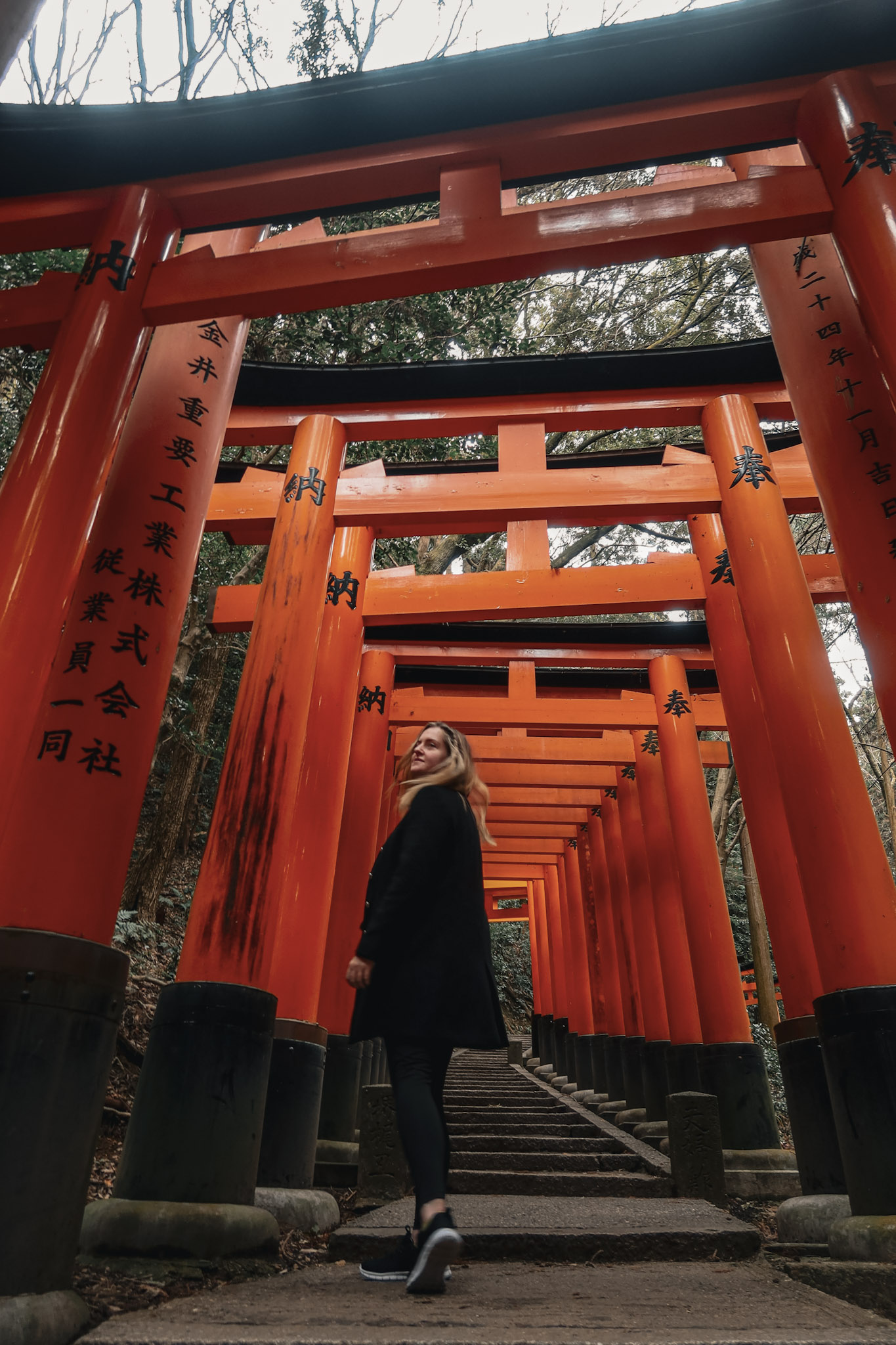
The vastness of the 10,000 tori gates surprised me. They stretched further than I imagined, continuing all the way to the top. The gates stand closely packed together at the start, then become more spaced out after the Yotsutsuji intersection. Wooded surroundings create a peaceful, almost enchanted atmosphere around the gates. This is no surprise, as Mt. Inari is a very spiritual place.
2. The Romon
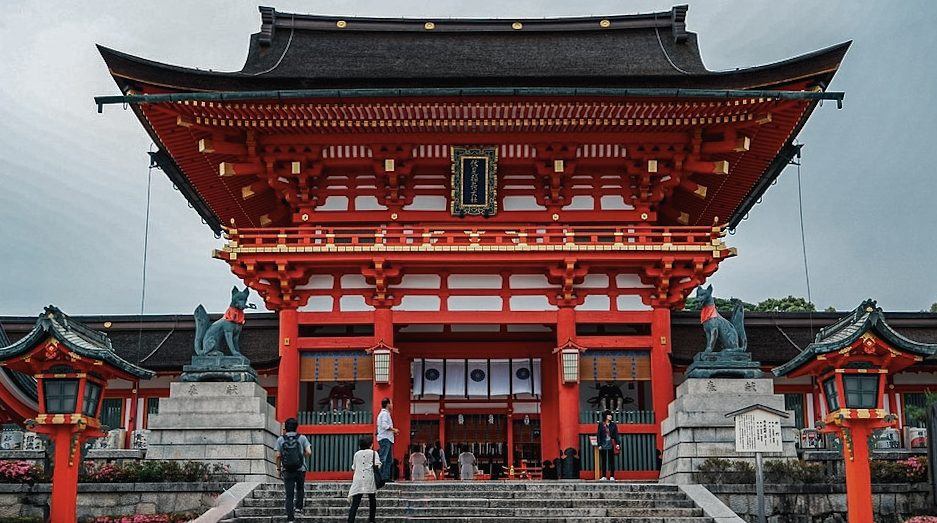
At the entrance is the main entrance gate called the Romon. Past the gate are many shinto shrines, each dedicated to different gods.
We waited until the end of the hike to visit here to get ahead of the crowds.
3. Fox Statues
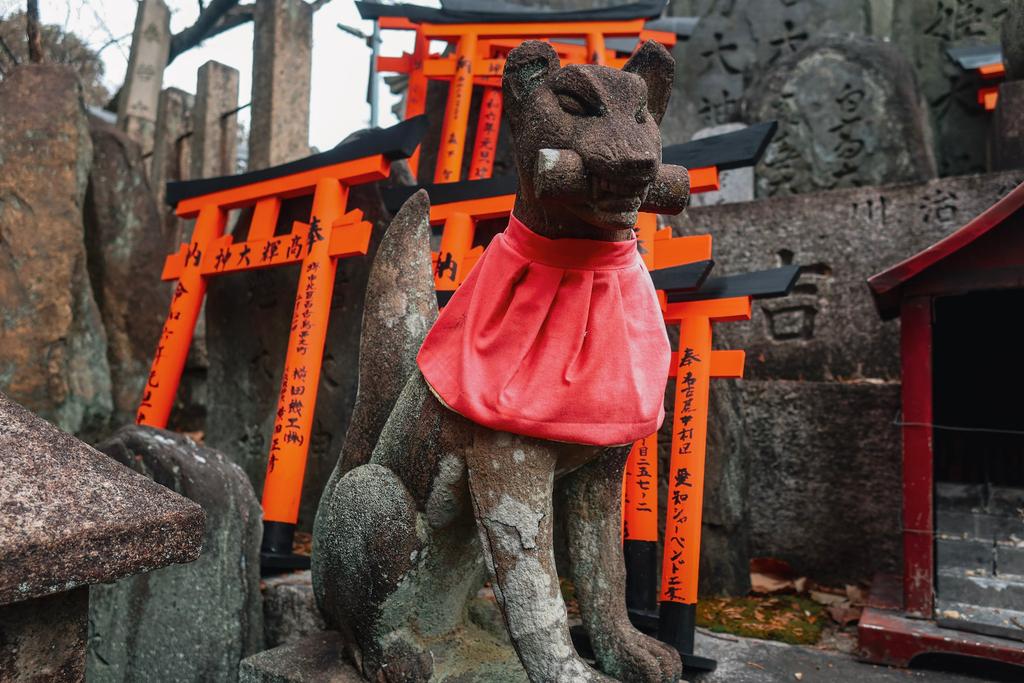
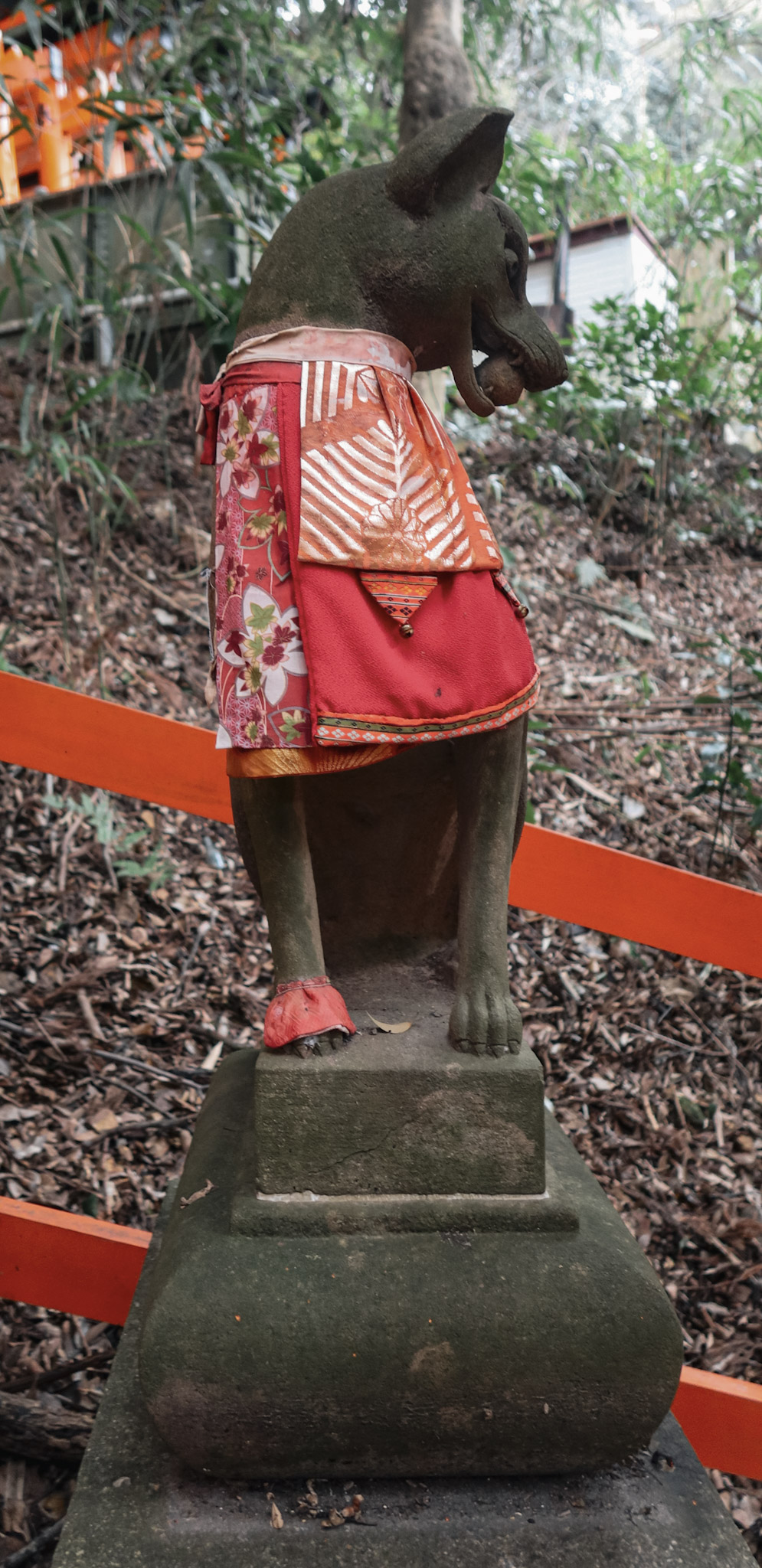
Throughout the hike, you’ll encounter thousands of fox statues. The reason for this is that in Japan, foxes are believed to be the messengers of God. The foxes are all holding keys in their mouth to protect the rice granaries.
4. Viewpoint (Yotsutsuji Intersection)
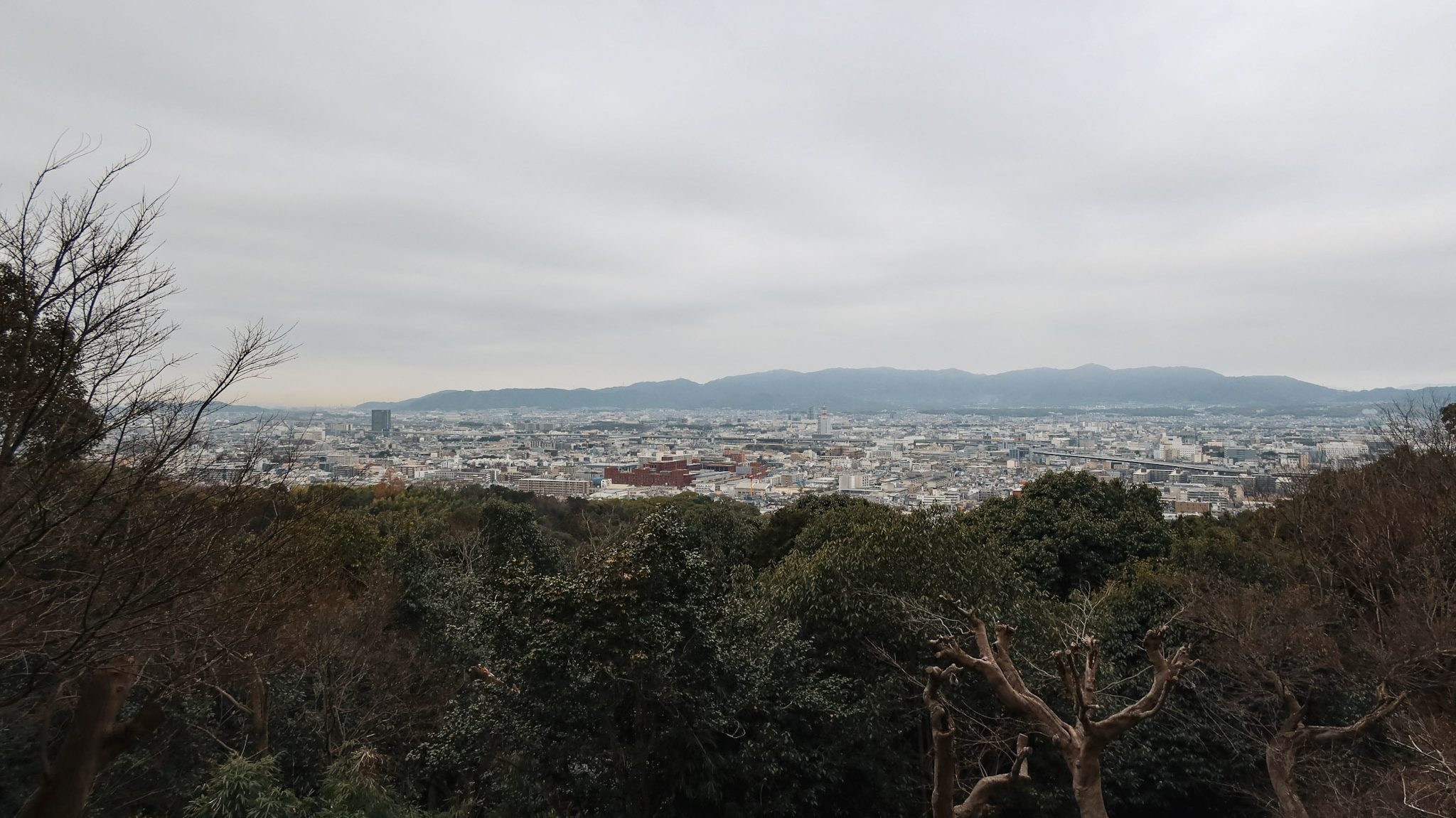
About 30 minutes into the hike you will reach a viewpoint over Kyoto.
This is a nice spot to relax for a few minutes to catch your breath after climbing all those stairs.
This is the only viewpoint on this hike, there is no view at the very top. This vantage point often serves as a turning point for many hikers.
5. At The Top Of Mt Inari
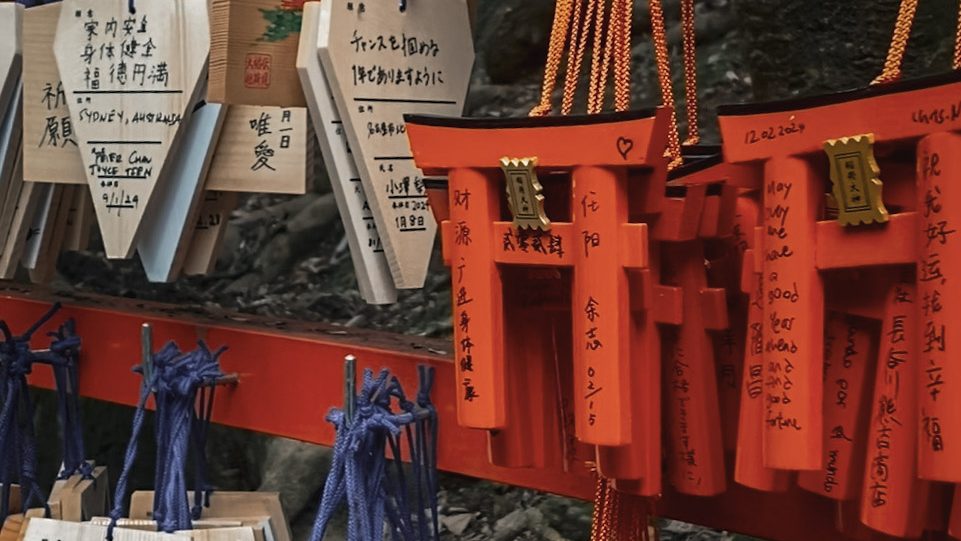
As mentioned above, there is no view at the top of Fushimi Inari, although many people are disappointed by this, despite the lack of views there is still an incredible reward. This reward lies in the hike’s serenity and the spiritual connection you feel with the mountain.
At the summit, you’ll find wooden plaques called ‘ema‘ shaped like fox statues and tori gates. Visitors traditionally write prayers or wishes on them and hang them at the shrine. You’re not limited to wishes – feel free to write any message you desire.
It wouldn’t be Japan without a vending machine, and of course there is one at the top!
Is Fushimi Inari-Taisha Worth Visiting?
Absolutely! It’s a truly memorable experience combining Japanese culture, spirituality, and nature all in one.
While I highly recommend visiting as early as possible, if an early morning visit isn’t feasible, you should still go! Just set your expectations for larger crowds and the challenge of capturing photos without people in the background. (But hey, that’s what Google’s magic eraser is for, right?).
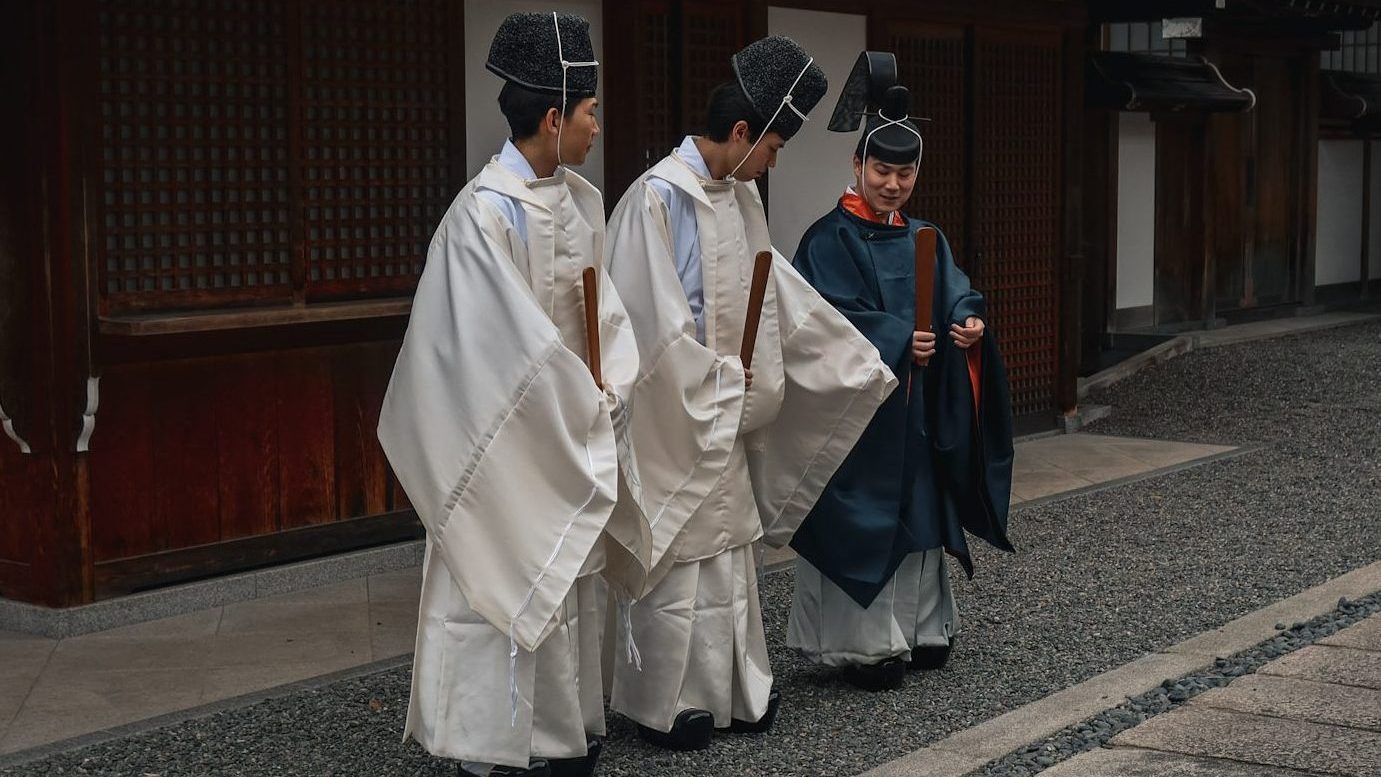
Getting To Fushimi Inari-Taisha
The good news is that Fushimi Inari is easily accessible thanks to Inari station. Fushimi Inari is located just a 3 minute walk from the station.
Kyoto to Fushimi Inari-Taisha
To get to Fushimi Inari-Taisha there are two best ways.
- The Keihan line from Sanjo or Gion-Shijo Station to Inari station will take 24 minutes. Trains start at 4:55 am. Cost: ¥220
- The Nara line from Kyoto station to Inari station will take 5 minutes. Trains start at 5:50am. Cost: ¥150
Osaka to Fushimi Inari-Taisha
Getting from Osaka to Fushimi Inari-Taisha is east thanks to Japans excellent railway network.
Highspeed trains call Shinkansen go from Umeda Station to Kyoto station in 35 minutes. From Kyoto station you can transfer to the Nara line where you will reach Inari Station in just 5 minutes.
This whole journey will cost approximately ¥860
Where to eat in Inari
After all those stairs you are going to need some fuel! Inari has lots of highly rated restaurants! Here are the places I recommend (the link takes you to Google Maps).
Fukakusa Ramen Toriton – ramen and Taiwanese fried chicken
Ohmiya – the eel is highly rated
Inarinadai Dohachi – casual spot serving up large bowls of udon
Gyukatsu Kyoto Katsugyu – popular restaurant, the wagu is highly recommended
Pin it for later

